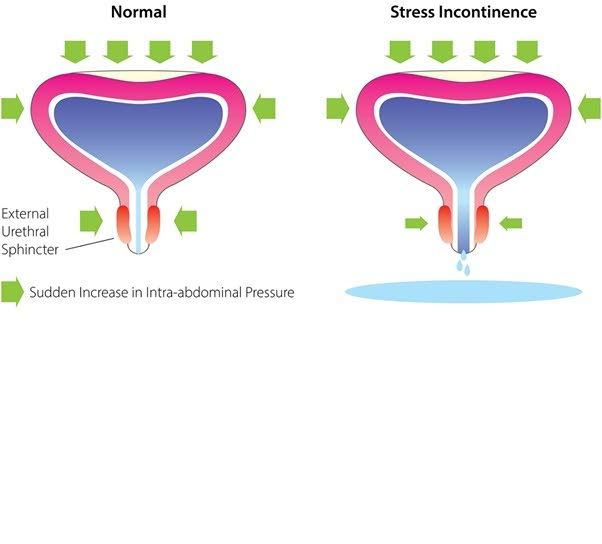Stress urinary incontinence

DR SATYENDRA PERSAUD
STRESS incontinence refers to leakage of urine during physical activity such as sneezing, laughing or exercise. It is the most common type of urine leak in women. It occurs when the pelvic muscles that support the bladder and bladder pipe weaken and this causes the urine pipe to move when the woman strains. It is unable to function to hold back the urine and the woman experiences a leak. This weakness may be as a result of child bearing or even ageing. Smoking and being obese also increase risk of stress incontinence.
What should you do if you have stress incontinence?
You should see a urologist who will discuss your symptoms and conduct a thorough examination including a pelvic exam to see whether you have stress incontinence only or mixed with something else. During the course of evaluation, you will require a basic urine test to make sure there are no signs of blood or infection. In some cases, you may require a special test which looks at bladder function in detail.
What are the treatment options for stress incontinence and is surgery always necessary?
The decision to treat or not to treat is determined by symptom severity and bother and what impact the symptoms have on a woman’s life. Weight loss and avoidance of situations which cause leakage are a good start. As with most conditions there are surgical and non-surgical options.
There are several non-surgical options –
Pelvis floor strengthening exercises called Kegel exercises help to improve muscle strength and may help with incontinence. There are a number of good videos online teaching women about Kegel exercises.
 A number of substances may be injected around the urethra (urine pipe) to make it thicker and stop the urine from flowing. This is not permanent.
A number of substances may be injected around the urethra (urine pipe) to make it thicker and stop the urine from flowing. This is not permanent.
Pessaries are devices which are inserted in the vagina and help support the bladder and urethra. They are not suitable for everyone and will need changing periodically.
What are the surgical options?
There are a number of options which utilise the body’s own tissue or artificial tissue with the aim being support of the urine pipe. Tissue may be harvested from the leg or even the covering of the muscles in the tummy and used as slings – these are called autologous fascial slings.
Synthetic slings using mesh are highly effective at treating stress incontinence – these are called mid urethral slings. A thin strip of mesh is passed through the vagina and up through the abdomen or groin. It sits below the urine pipe and provides support. The urologist checks to make sure the mesh has not accidentally perforated the bladder. Sometimes these mesh may erode into the vagina or may be too tight and require adjustment or cutting.
Urethral slings have gotten a bad name over the last few years because of mesh used for prolapse which occurs when the bladder, rectum or uterus protrudes out the vagina. This is NOT to be confused with the mesh we are discussing here.
If you leak when you cough or sneeze, have a chat with your urologist to discuss your options.
Satyendra Persaud MBBS DM (Urol) FCCS FRCS (Eng) lecturer in urology/DM urology co-ordinator University of the West Indies St Augustine, TT


Comments
"Stress urinary incontinence"